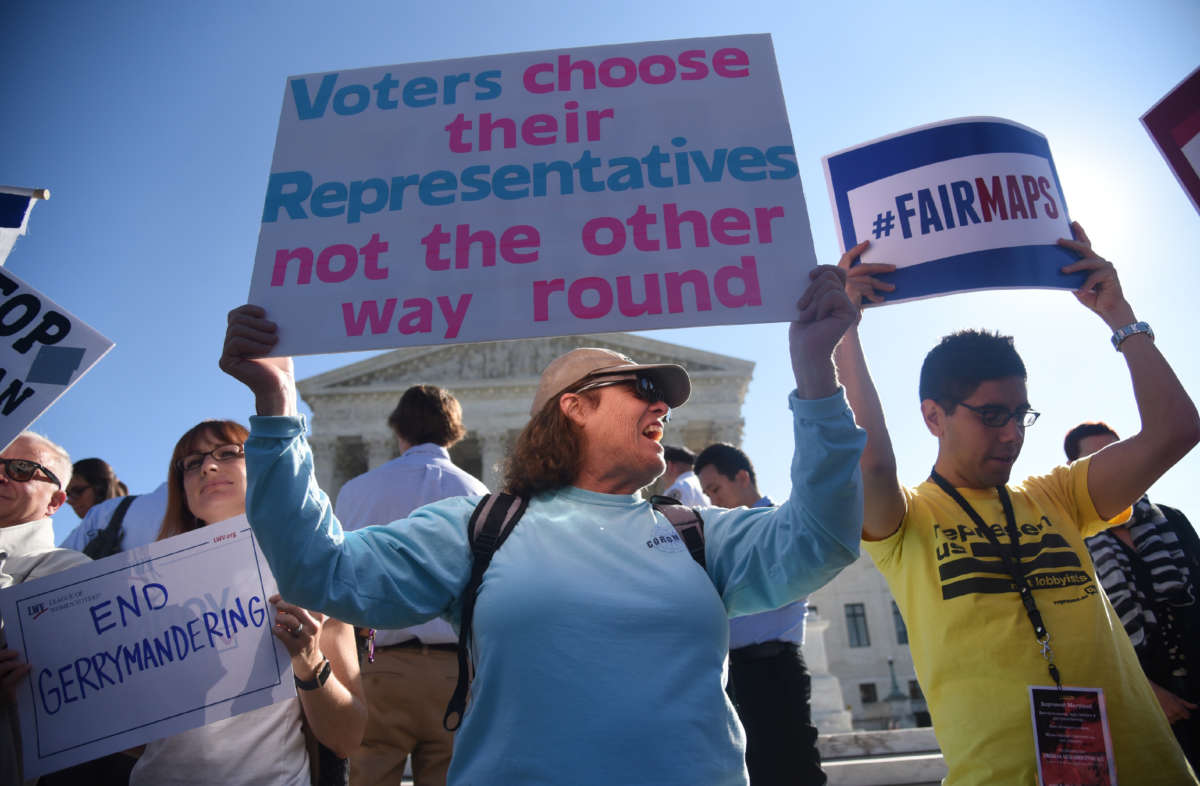Ohio Supreme Court justices struck down Republican-drawn district maps in the state on Wednesday, ruling that they were unconstitutionally gerrymandered. The state’s redistricting panel will now have 10 days to redraft the maps.
The decision was made 4 to 3, with one Republican justice breaking from her party to rule with the three Democrats. In the majority opinion, Justice Melody Stewart wrote that the maps didn’t match statewide voting preferences, which were 54 percent for Republicans and 46 percent for Democrats in the past decade.
“[T]he commission did not attempt to draw a plan that meets the proportionality standard,” Stewart wrote, adding that the commission’s maps unfairly favored one party.
Although the justice didn’t specify which party, the maps were drawn by Republicans. Ohio voters passed a constitutional amendment in 2015 aimed at preventing partisan gerrymandering; the redistricting commission will have to redraw maps to obey that amendment.
The decision was celebrated by voting rights advocates who have argued in lawsuits that the new map is unfairly biased toward the GOP and that the map violates the Voting Rights Act by suppressing Black voters.
“The Ohio Supreme Court took an important step in rejecting the cynical partisanship that was behind the Republicans’ gerrymandered state legislative map,” Marc E. Elias, a voting rights attorney who represented plaintiffs in one of the lawsuits, told The Washington Post. “Our fight for fair maps and voting rights continues in Ohio and around the country.”
The news was also celebrated by Alicia Bannon, who aided plaintiffs in one of the lawsuits and who serves as the Judiciary Program director for the Brennan Center for Justice.
“The General Assembly maps entrenched a GOP supermajority and flouted clear partisan fairness requirements in the Ohio constitution – abuses that especially impacted Ohio’s Black, Muslim and immigrant communities,” she said in a statement. “The commission is now tasked with drawing replacement maps. We will be watching to ensure that all Ohioans get the fair representation they are due.”
Indeed, plaintiffs had accused the redistricting commission of ignoring the fact that Black voters have historically had their voting power diluted by district maps. Voting rights advocates pointed to a September hearing in which a Republican mapmaker told the commission that “legislative leaders” instructed him to deliberately disregard racial data in drawing Ohio House and Senate districts.
The bipartisan redistricting commission, which is made up of five Republicans and two Democrats, was created in order to help quell partisanship in map drawing in the state. But lawmakers were able to sidestep the commission, allowing the Republican-controlled legislature to draw what experts said was an extremely gerrymandered map.
The map gave heavy favor to Republicans, further entrenching previously red districts and ensuring that more competitive districts were still right-leaning. It also took one surefire seat away from Democrats, creating a high possibility of 13 Republican seats and only two Democratic seats in the state, FiveThirtyEight found.
We have 9 days to raise $50,000 — we’re counting on your support!
For those who care about justice, liberation and even the very survival of our species, we must remember our power to take action.
We won’t pretend it’s the only thing you can or should do, but one small step is to pitch in to support Truthout — as one of the last remaining truly independent, nonprofit, reader-funded news platforms, your gift will help keep the facts flowing freely.
